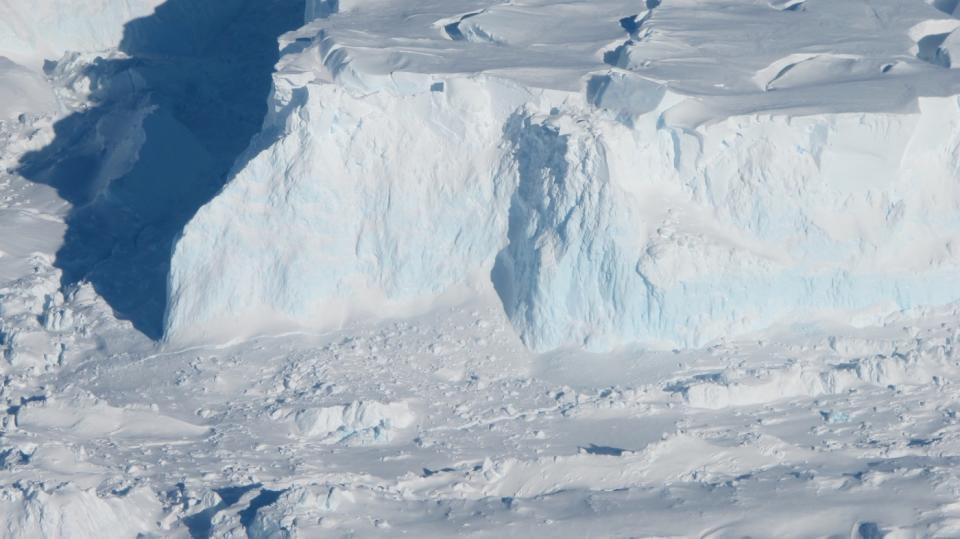‘World’s most dangerous’ glacier could soon collapse triggering sea level rise

A glacier described as the ‘world’s most dangerous’ is showing worrying signs of collapse, after scientists found an 1,000ft tall cavity growing beneath the ice.
The cavity has an area two-thirds the size of Manhattan – and NASA researchers described the find as ‘disturbing’.
It’s big enough to have contained 14 billion tons of ice, and most of that ice melted over the last three years.
Researchers have previously warned that the huge Thwaites glacier could trigger a runaway ice sheet collapse which could raise global sea levels by 10 feet.
Researchers expected to find some gaps between ice and bedrock at Thwaites’ bottom where ocean water could flow in and melt the glacier from below.

Bute size and explosive growth rate of the newfound hole surprised them.
Researcher Eric Rignot of the University of California, Irvine said, ‘We have suspected for years that Thwaites was not tightly attached to the bedrock beneath it.
‘Thanks to a new generation of satellites, we can finally see the detail.’
MORE: Lawyers representing convicted killer Jack Shepherd has received death threats
MORE: RSPCA appeal after dog found strangled to death and tied to a tree branch in middle of road
The cavity was revealed by ice-penetrating radar in NASA’s Operation IceBridge, an airborne campaign beginning in 2010 that studies connections between the polar regions and the global climate.
The researchers also used data from a constellation of Italian and German spaceborne synthetic aperture radars.
These very high-resolution data can be processed by a technique called radar interferometry to reveal how the ground surface below has moved between images.
‘The size of the cavity under a glacier plays an important role in melting,’ said study lead author Pietro Milillo of NASA.
‘As more heat and water get under the glacier, it melts faster.’

 Yahoo Movies
Yahoo Movies 
